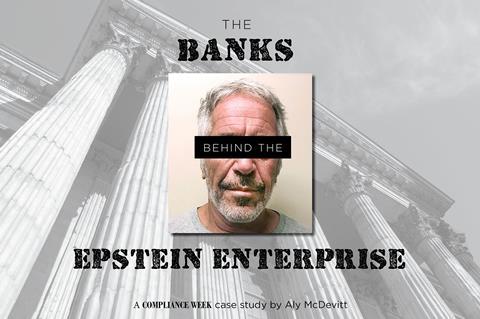Ten years after the onset of the global financial crisis, the banking industry “has made significant efforts to understand and improve the culture of their firms, and scrutinize employee conduct,” says a new report from the Group of Thirty. Despite these efforts, however, the banking industry still suffers from a negative reputation, and “trust still needs repairing because serious conduct and culture failures continue to occur in many markets.”
The G30, an international organization comprised of senior representatives of the public and private sectors, “aims to deepen understanding of international economic and financial issues.” Its new report, “Banking Conduct and Culture: A Permanent Mindset Change,” examines the progress banks have made since the group’s 2015 report on the same topic.
“For permanent and ongoing change to occur, banks need to focus on leadership at every level of the organization.”
Gail Kelly, Steering Committee Vice-Chair, Group of Thirty
“Bank conduct and culture are at the center of a slow, uphill battle for trust,” says G30 Banking Conduct and Culture Working Group Chair William Rhodes, former chairman and CEO of Citibank.
Regaining that trust will require persistent efforts across the industry. On conduct and culture, boards and senior management must lead by example, he says.
Since the Financial Crisis, the banking industry has paid an estimated $350-$470 billion in penalties (including fines and litigation/settlement charges) for conduct-related matters, “evidence that these so-called soft people issues can significantly impact the bottom line,” the report says. “Both institutional clients and retail customers are becoming more focused on bank conduct and culture, driven by highly publicized cases of conduct failures. Senior executives and board members are increasingly expected to demonstrate that conduct risk is understood and managed and that appropriate discipline and culture are being reinforced.”
Beyond banks
The Group of Thirty report includes examples of corporate misconduct—and their catalysts—that are not limited to the banking industry.
“Other industries worldwide, including manufacturing, automotive, and high tech, have exhibited various forms and levels of misconduct, especially over the last few years,” it notes. “As in banking, the root causes of misconduct stem from poor corporate cultures, inexperienced or self-absorbed managers, weak internal controls, and lack of safe escalation procedures. These have resulted in billions of dollars in fines, criminal investigations and charges, leadership removal, and loss of customers.
Two industries in particular, automotive and high tech, “highlight the similarities in environmental factors also observed in the banking industry, which led to cultural breakdowns and eventually to misconduct issues,” the report says.
In Germany, for example, several major incidents of misconduct emerged from the intentional manipulation of vehicular software to deceive emissions tests. In September 2015, the U.S. and Germany opened investigations into Volkswagen’s/Audi’s rigging of software on 11 million diesel-powered vehicles worldwide (including 600,000 vehicles in the U.S.) to falsify emissions levels and pass environmental inspections.
Investigators also found active approval, engagement, and concealment of this program by senior leadership, including then-CEO Martin Winterkorn. Consequently, Volkswagen has faced numerous federal investigations in both the U.S. and Germany; criminal charges or arrests of senior leaders and managers, including Volkswagen’s and Audi’s CEOs; and more than $30 billion in recalls, legal penalties, and settlements as of mid-year 2018.
German authorities are also investigating similar misconduct at Daimler, which faces a potential $4.4 billion fine for illegal software in some Mercedes-Benz models.
The G30 report notes that German car executives, many of whom were involved in the emissions scandal, received among the highest bonuses in the country.
The high-tech industry has also struggled with reputational issues, allegations of misconduct, and loss of business due to actions that negatively affect customers and employees, the report says, adding that it has been “plagued by extensive accusations of discrimination and mistreatment of female employees.”
“The examples of cultural failings are rampant,” the report says. During the tenure of its former CEO, Uber’s culture lapses contributed to numerous incidents of misconduct, including deliberately undermining competitors (booking thousands of fake Lyft rides and spamming Lyft drivers), underpaying its drivers, using technology to deceive law enforcement, applying surge prices inappropriately, and stealing trade secrets from Waymo, formerly the Google self-driving car project.
“The Uber example is also an interesting case of social media turning on a company for its decisions/behaviors, and the #DeleteUber movement showed customers voting with their feet,” the report says.
Another example: In December 2017, Apple admitted to slowing the processors on its older generation iPhones, presumably to sell more batteries or new devices. Facebook drew even greater criticism when it “demonstrated significant negligence in managing the privacy of millions of its users’ data,” as revealed in the Cambridge Analytica scandal in early 2018.
Personal conduct of senior executives in the tech sector is also under scrutiny. In a one-month period during the summer of 2018, three CEOs in the chip industry (Texas Instruments, Intel, and Rambus) resigned or were fired for conduct reasons.
—Joe Mont
The stakes are high for financial institutions facing competitive challenges.
“As Bill Gates presciently put it nearly twenty-five years ago, ‘banking is necessary; banks are not.’ Banks have a small window to figure out how to manage culture and conduct and regain the public’s trust,” the report says. “Without earning trust every day, the continued survival of banks is at risk from displacement by new industry entrants, a growing list that includes FinTech start-ups, technology firms, retailers, and telecom companies.”
The G30 assessment notes that much work has been done at the most senior levels of financial organizations—with “tone from the top” receiving more focus than “tone from above” (day-to-day examples set by the conduct and behavior of an employee’s immediate manager or their manager’s manager).
The report stresses the importance of not losing sight of how important “tone from above”—the signals sent by an employee’s manager or supervisor—can be. “Cultural norms are felt and transmitted most directly by a worker’s immediate supervisors,” it says. “The worker in a large firm is unlikely to have regular contact with senior managers or their CEO. This is why the task of embedding the desired conduct and cultural norms throughout an institution is so important.”
“For permanent and ongoing change to occur, banks need to focus on leadership at every level of the organization,” says G30 Steering Committee Vice-Chair Gail Kelly, senior global advisor for UBS and former CEO of Westpac Banking Corp. “Middle management plays an integral role in embedding cultural reforms. Leading by example and ensuring that day-to-day activities at the front line are consistently aligned with company values is critical.”
The report’s recommendations include guidance on how changing the board structure can enable the success of cultural and conduct reforms.
Bank boards and senior management have significantly increased their involvement in conduct and culture topics and have reorganized their governance and reporting structures to better oversee these areas. “But there is still lack of clarity in many organizations on how the board will champion, oversee, and monitor conduct and culture issues and whether a single dedicated committee of the board is appropriate,” it says.
“There is significant risk of dilution and dispersion of responsibility for the governance of something as broad as culture,” says G30 Steering Committee Vice-Chair David Walker, former chairman of Barclays. He and other G30 members who spoke at a press conference earlier this month to announce the report recommended the creation of a dedicated board committee to ensure continuing and focused attention on accountability and culture.
“We have also concluded that, while difficult, conduct and behavior, the building blocks of a firm’s culture, can be measured and monitored,” Walker added. “Appropriately regular audit of conduct and behavior offers a sure pathway to effective and permanent embedding of the bank’s culture.”
With a more ominous tone, a number of industry leaders interviewed for the report voiced numerous concerns, including: a lack of faith that the industry has really changed its ways; the potential for conduct, culture fatigue, “employee burnout from all of the culture and conduct initiatives,” and a desire “to get back to business”; uncertainty around how new developments (such as technology and artificial intelligence) are affecting conduct; and fear that the ongoing remedies and organizational changes are not fully embedded and won’t “stick” in the longer term.
“Only by making culture stewardship a permanent and integral part of how business is conducted will organizations avoid culture fatigue and backsliding,” the report stresses.
Turning to matters of pay and compensation, G30 Steering Committee Member Gerd Haeusler, former chairman and CEO of Munich-based Bayerische Landesbank, says the report findings illustrate that “outsized incentives can have problematic outcomes” in the context of sales targets, tax avoidance, and money laundering.
Upon examination of other industries that have suffered significant and systemic cultural breakdowns similar to those observed in banking, the G30 report identified characteristics these industries have in common and that might provide insights into characteristics that lead to greater culture risk.
Lack of diversity: Industry homogeneity in backgrounds, education, gender, and racial/ethnic composition remains prevalent and can foster groupthink cultures. Such environments limit the number of challenges or alternative opinions required to effectively mitigate poor business decisions.
Presence of dominant companies: A few large, successful players dominate these industries and may lead to deprioritizing culture, given that these companies have been able to attract customers and talent due to their dominant brands.
High dependence on specialized skills: High-quality, well-educated candidates with specialized knowledge are critical in these industries. As a result, these individuals can often take on an outsized organizational role in decision making and make it more challenging to fire such highly valued individuals even in the face of egregious behaviors or inappropriate decisions. “Distorted views of individual’s contributions can also lead to the cult of personality in many of these firms,” the report says.
Misaligned incentives: Compensation and performance-based pay is often aligned with quantitative or financial targets, which can inadvertently prioritize decisions that lead to misconduct. Also, average annual wages for positions in culture-challenged industries tend to be significantly higher than mean annual national wages.
Ineffective leadership and management skills: Board members, senior leaders, and middle management of fast-growing and highly successful firms “may overestimate their own and their company’s capabilities and be ill-equipped and too inexperienced to recognize potential risks and complexities of their operating and revenue models,” the report says. “Hubris caused by a high degree of success can also cause individual leaders to believe their capabilities and decisions are unassailable and they start to believe their own rhetoric.”
–Joe Mont
“We recommend removing the link between sales targets and compensation,” he said. Many banks have done just that and integrated cultural and behavioral metrics into performance scorecards.
The G30 study found that fostering a diverse workforce and supporting that diversity must also be an area of continued focus. Banks, it said, must be reflective of the diverse societies in which they operate; a diverse workforce “has numerous business benefits, ensures better decision-making processes and outcomes; and delivers to the bottom line.”
Along with workforce diversity, many banks have expanded training programs to help employees better understand behavioral expectations. Best practices include creating environments of “psychological safety” where employees “can speak up, challenge groupthink, and escalate concerns.”
Among the key lessons repeatedly raised by financial sector leaders as they reflected upon the lessons learned and the future of banking culture:
- Managing culture is not a one-off event, but a continuous and ongoing effort that must be integrated into day-to-day business operations.
- There is increasing awareness that “tone from above” is as important as “tone from the top,” and this requires a shift in how managers at all levels of the organization are trained, promoted, and supported.
- While cultural norms and beliefs cannot be explicitly measured, the behaviors and outcomes that culture drives can and should be measured.
- Regulation has a limited role to play, given that culture cannot be mandated or defined by rules.
- Regulation can, however, be an effective tool in outlining basic principles (especially related to good conduct), refocusing banks’ attention on areas of persistent conduct failure, and providing insights and lessons learned from across the industry. Supervision can play a role in monitoring and providing feedback to banks that can aid the bank board and senior management in addressing culture and conduct issues.
- Industry-wide dialogue and sharing of best practices are key to restoring trust and strengthening the entire banking industry. The cultural health of the industry, as a whole, benefits all institutions.
The G30 report revisited recommendations made in the 2015 report and identified areas where additional efforts and attention are still required. Among them:
- Bank boards should reevaluate their governance structure to ensure a specific board committee has oversight of the bank’s conduct and culture.
- Bank boards and senior management should work more closely with various business units and geographic and functional heads to strengthen the quality and availability of data and insights needed to manage conduct and culture.
- Banks should minimize sales pressures that can lead to misconduct. Similarly, they should explore ways to celebrate role models in behavior, both in business decisions and in individual actions.
Other recommendations include reviews and changes to business processes, including new product approval and product governance, revised pricing approaches, improved whistleblowing mechanisms, and review of questionable market practices in trading and hedging, “all of which are signs that the conduct agenda is beginning to cascade down to the way business is done.”
Conduct risk oversight roles and responsibilities should be clear across various departments, including human resources, risk, and compliance. The report stresses the importance of tackling the industry-wide issue of “rolling bad apples”—individuals with poor conduct records moving from one bank to another.
“Culture comprises not only conduct and behaviors, but also the bank’s values and ethics,” the report concludes. “While cultural norms and beliefs cannot easily be measured, the conduct and behaviors that the cultural norms encourage or discourage can be. In fact, conduct can and should be observed, monitored, managed, and incentivized. It is important to remember that while conduct and behaviors—that is, what people actually say and do—are the only visible elements of culture, they are directly influenced by the less tangible elements, such as the bank’s unspoken rules, ideas, norms, and subconscious beliefs that lie beneath the surface.”













No comments yet